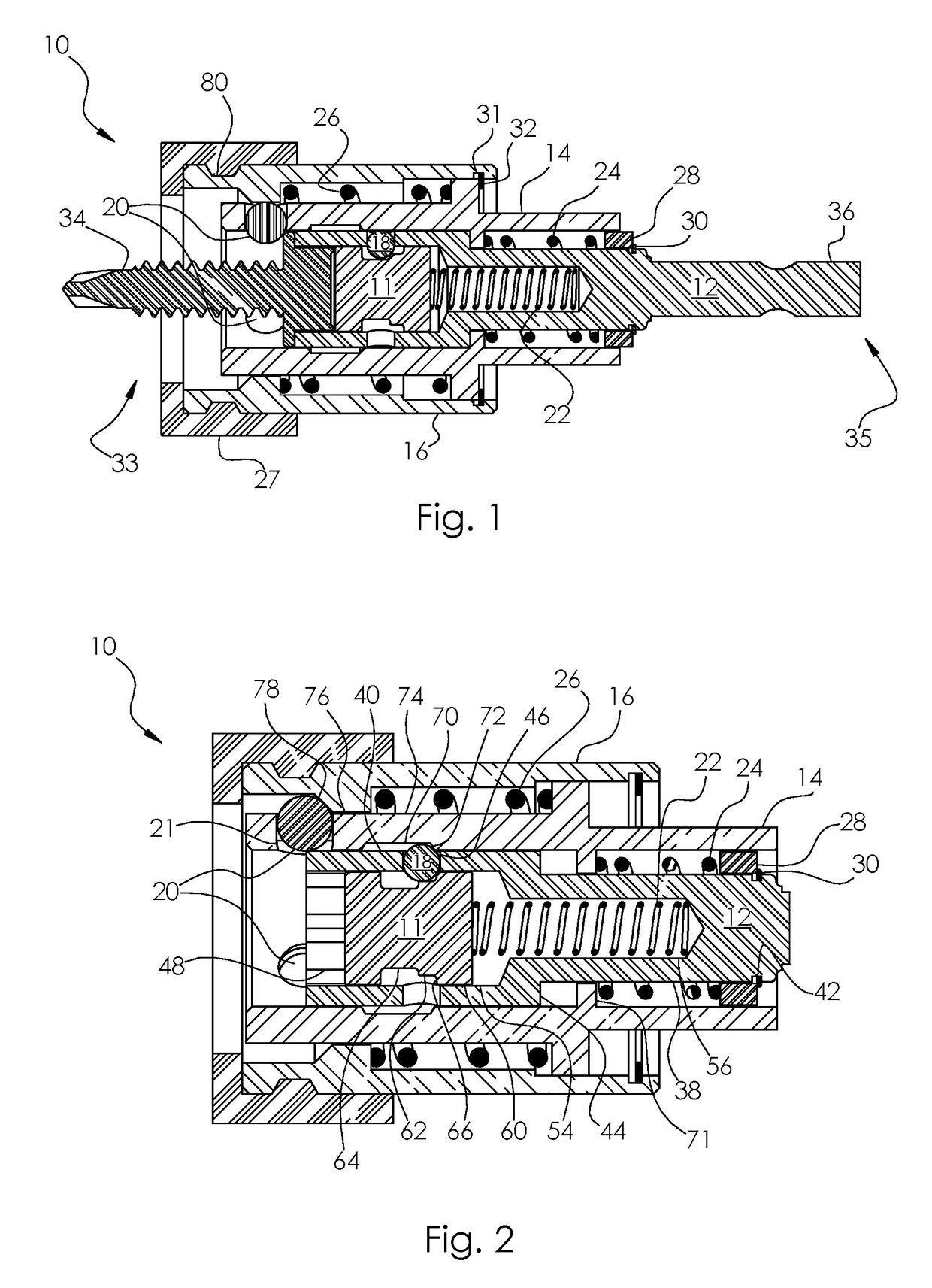Device and method for fastener element retention and installation
a technology of fastener and element, applied in the direction of wrenches, power driven tools, screwdrivers, etc., can solve the problems of further adding undesirable length to the fastener, feature adding cost, etc., and achieve the effect of improving productivity and improving the productivity of the installation of various fasteners
- Summary
- Abstract
- Description
- Claims
- Application Information
AI Technical Summary
Benefits of technology
Problems solved by technology
Method used
Image
Examples
first embodiment
[0056]FIG. 2 is a cross-sectional view of a first embodiment illustrated generally as 10, configured in the unloaded position, ready for a fastener to be loaded. In this figure, previously shown shank 36 has been cropped off the proximal side of the device as it may take the form of many conventional shank styles, the specifics of which are not central to the function of this embodiment. The distal end of drive bit 12 has a bore 48 for receiving the external drive geometry of a fastener. The trigger shuttle 11 is slidably located in a longitudinal bore 54 within bit 12. The trigger shuttle 11 has a proximal section 60 of a first outer diameter which is slightly smaller than the diameter of bore 54 to allow relative sliding motion between trigger shuttle 11 and bit 12. Shuttle 11 includes a section 62 of a second diameter distal to section 60 and also of a smaller diameter than 60. A third section 64 is distal to section 62 and section 64 has a diameter which is smaller than section ...
third embodiment
[0085]the invention could modify the mechanics of device 138 shown in FIG. 10 to utilize smaller balls 20 thereby reducing the length and diameter of such a device whereby significantly increasing radial clearance between the shank of mating fastener 134 and balls 20. This will reduce somewhat the ability of device 138 to engage and align the two mating fasteners 134 and 132, but the many previously mentioned advantages to the current invention would be retained.
fourth embodiment
[0086]FIG. 11 is a section view of a fourth embodiment for fasteners containing geometric drive depressions, generally illustrated as device 160, which is shown here in an unloaded state. Device 160 includes a fastener 161, a bit holder 162, and a bit insert 164 which will include drive geometry to interface with a fastener such as a cruciform, straight blade, hexagon, hex-lobular, or square drive. Bit insert 164 has a circumferential groove in which a retaining ring 188 will retain the bit insert 164 within bit holder 162 under normal operating conditions, but will also allow removal to change to an alternate bit insert 164. Located within bit holder 162 is a spacer ball 180, intermediate ball 182 and a plurality of trigger balls 184. A compression spring (not shown) will react between bore face 206 and ball 182 to urge ball 182 and subsequently ball 180 and bit insert 164 forward towards the fastener receiving end of device 160. Sleeve 166 contains an internal groove 200 for inter...
PUM
| Property | Measurement | Unit |
|---|---|---|
| forces | aaaaa | aaaaa |
| storing energy | aaaaa | aaaaa |
| stored energy | aaaaa | aaaaa |
Abstract
Description
Claims
Application Information
 Login to View More
Login to View More - R&D
- Intellectual Property
- Life Sciences
- Materials
- Tech Scout
- Unparalleled Data Quality
- Higher Quality Content
- 60% Fewer Hallucinations
Browse by: Latest US Patents, China's latest patents, Technical Efficacy Thesaurus, Application Domain, Technology Topic, Popular Technical Reports.
© 2025 PatSnap. All rights reserved.Legal|Privacy policy|Modern Slavery Act Transparency Statement|Sitemap|About US| Contact US: help@patsnap.com



